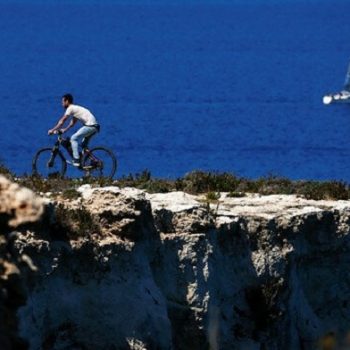
Reproduction ratio model takes into account …
- Posted by S@gW0rPr3@dm1n
- On May 5, 2020
- 0 Comments
… virus cases which have not been detected
The model being used to calculate the reproduction ratio of COVID-19 in Malta not only takes into account virus cases which are yet to be found, but assumes that the majority of cases are asymptomatic ones which authorities are not yet aware of, statistician Vincent Marmara said in his weekly vlog with the The Malta Independent on Sunday.
In his analysis, Marmara said that Malta’s reproduction ratio has remained at around the same level as it was last week – when it stood at 0.54. This means that two people are transmitting the virus to one person.
The reproduction ratio of the virus is one of the key figures which countries across the world have been trying to reduce and keep at a low level ever since the COVID-19 pandemic began. The aim for countries has been to reduce the ratio to a level of 1 – which would mean that one person would transmit the virus to one other person.
With 21 new cases reported in the past week – which is the eighth week since Malta reported its first case of COVID-19 – the numbers have continued to decline since previous weeks, although not at the same rate as between the sixth and the seventh week.
Marmara used his vlog this week to answer some of the more frequent questions with regard to the modelling being used to work out Malta’s reproduction ratio.
One such question was why the reproduction ratio at the beginning of the pandemic – when the number of weekly cases was comparable to the number of weekly cases today – was higher than it is now.
Marmara explained that the model which he uses, which is the ECIR model, takes into account that fact that in the early weeks, the numbers are on the increase as the pandemic is still in its infancy. Similarly, with the pandemic now reaching its later stages, the model recognises this and takes this into account accordingly.
Another question which Marmara moved to answer is on whether the model takes into accounts cases which are unreported, namely due to the fact that these cases would not have any symptoms.
Some 20% of Malta’s cases have been found to be asymptomatic, with the breakdown there being that 9% reside at the Ħal Far Open Centre, parts of which remain under quarantine, and the remaining 11% were in the community.
Marmara noted that the modelling not only takes into account the fact that there are unreported cases, but actually assumes that the majority of people are people which do not know they have the virus precisely because they have no symptoms.
He said that the model takes this into account so that there is a clear idea for when the reproduction ratio is being calculated.
Referring to Malta’s wave, he noted that the day-by-day breakdown of new cases shows that there have been low numbers for a number of days. He compared this to the same breakdown for South Korea, which experienced a peak over a small number of days and then a long number of days with a very low number of cases.
He said that this can be considered either as a drawn-out end to their first wave, or perhaps even as a very low second wave of the virus.
When comparing Malta to other countries, such as Italy, Marmara notes that what sticks out is the length of time it took for social distancing measures to be implemented. He noted that, for instance, while it took weeks for Italy to stop mass activities, Malta only waited 10 days after the first case of the virus to stop the same mass activities.
The quick implementation of these social distancing measures eventually had a significant effect on lowering Malta’s curve, he said.
He noted that something else which he had been asked about was the ability to carry out a scientific survey to ascertain the extent of the pandemic.
Like a telephone survey would, he said, take into account ages, sex, and geographical district, a scientific survey can, through swab tests, do the same to understood how many people are carrying the virus in public. This would help authorities have a clearer visibility of the virus in the country, and to understand the percentage of cases who are asymptomatic carriers of the virus.
Report: Albert Galea, Date: 3rd May 2020





0 Comments